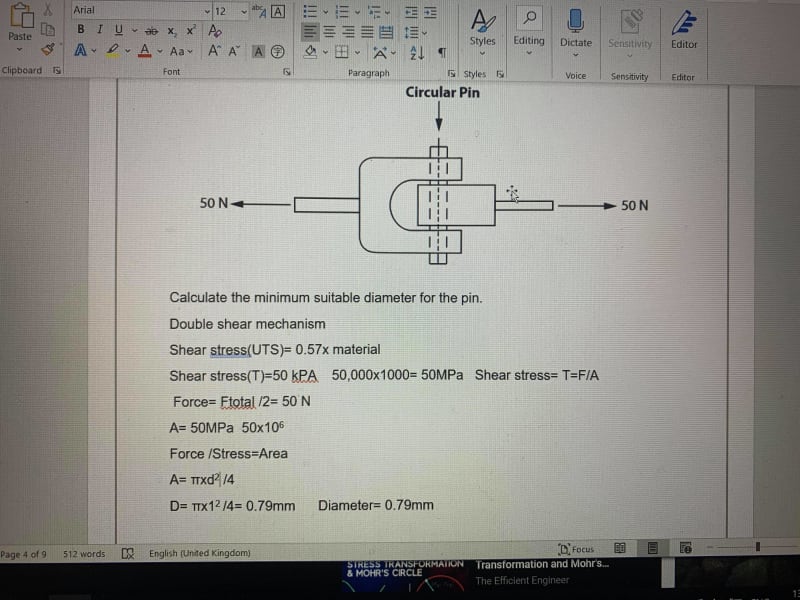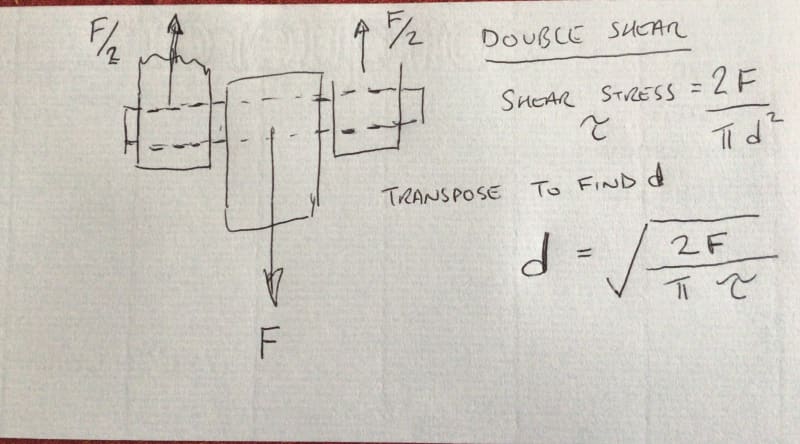A couple other things I noticed:
- You show shear strength (not "stress")* as being both 50 kPa and 50 MPa. You multiply the first by 1000 to get the second, but this doesn't make any sense to me. 50 MPa is in the range of fiberglass and some of the softer metals, so I believe this value more than 50 kPa. Steels and most other structural materials have shear strengths that are typically in the hundreds of MPa's.
- 50N is not a very big force. In fact, it's not much more than the average weight of an adult house cat. Therefore, if you use a strong material for the pin, the pin won't need to be very big. Using 50 MPa for the shear strength, I worked out something about the size of the cotter pins I have worked with around the house and on my cars, but it's late in the afternoon so I don't guarantee the result. But, I'm also not a cat person, so pin failure doesn't bother me all that much.

Now for an observation and a suggestion:
- I prefer to have the young engineers working for me do some calculations by hand before doing them on a computer, including just typing them in like you have done here. The reason is that pencil and paper work uses and exercises different parts of the brain than doing the same thing on a computer and apparently (according to some studies I have heard about but not read) does that better than working on a computer. For simple stuff like this, you will probably learn more and learn it faster using pencil and paper. Back in the late 1970s, when I was in college, we didn't have a choice.
- That being said, in the real world I do almost everything now on a computer. I still do some hand calcs from time-to-time, but that more for the variety of it. IMHO, the best way to do calculations like this one in a professional setting is to use Mathcad or SMath Studio. Mathcad Prime 6.0 is free to try for a month, then it reverts to the far less capable but still very usable and free for life Mathcad Prime Express. SMath Studio is simply free. Both programs allow you to do math with visible equations and they both handle units, and the unit handling is one of the key capabilities for producing accurate engineering calculations. In most ways the two programs work about the same, so it's pretty easy to jump from one to the other. Mathcad produces better looking output and SMath has more capabilities than Mathcad Prime Express, but you really can't go wrong with either program.
* "strength" is a material property; "stress" is the applied force divided by the cross-sectional area.
============
"Is it the only lesson of history that mankind is unteachable?"
--Winston S. Churchill


![[upsidedown] [upsidedown] [upsidedown]](/data/assets/smilies/upsidedown.gif)
